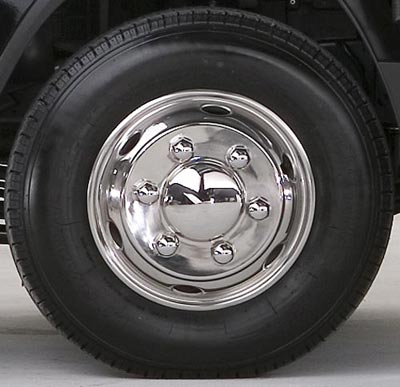
|
B
arry's
T
ire
T
ech This is a series of articles on the technical aspects of tires, their care and usage. My primary purpose in these articles is to help people understand tires and thereby reduce the risks we all face every day. ..........and since tires is just about the only thing I know about.......... Please drop me a note if you have a topic you want to see: Barry@BarrysTireTech.com |
|
LT metric Tires I am not a fan of replacing P metric tires (the size starts with the letter "P") with LT metric tires (the size starts with the letters "LT" - and vice versa. To explain this, below you'll find a chart that lists the inflation pressure vs load carrying capacity of both tires. There is a little known quirk about P metric tires. The load carrying capacity has to be reduced by 1.1 if the tire is used in what is loosely called a "Light Truck Application" - quoted from the Tire and Rim Association Yearbook: "multi-purpose passenger vehicle, truck, bus, or trailer". I interpret this to mean pickups, vans, SUV's, and (obviously) trailers. Some folks think this also means stretch limosines (I agree), Crossover vehicles (CUV's, and I disagree), mini-vans (I'm of mixed thoughts!), and mini-pickups (definitely!). Please note: LT metric tires DO NOT have to be derated. They were designed with this usage in mind. So to illustrate the whole issue, I've included both the load carrying capacity of P metric tires NOT used that way, as well as a column for P metric tires used in a Light Truck application, and - obviously - LT metric tires. |
| Inflation Pressure (psi) | Load Carrying Capacity (Pounds) | ||
|---|---|---|---|
| P235/75R15 | P235/75R15 (When used in a Light Truck Application) | LT235/75R15 | |
| 26 | 1753 | 1594 | - |
| 29 | 1852 | 1684 | - |
| 32 | 1940 | 1764 | - |
| 35 | 2028 (SL) | 1844 (SL) | 1530 |
| 38 | 2105 | 1914 | (1620) |
| 40 | (2157) | (1961) | 1680 |
| 41 | 2183 (XL) | 1985 (XL) | (1709) |
| 45 | - | - | 1709 |
| 50 | - | - | 1985 (Load Range C) |
| 55 | - | - | 2100 |
| 60 | - | - | 2235 |
| 65 | - | - | 2335 (Load Range D) |
| 70 | - | - | 2490 |
| 75 | - | - | 2610 |
| 80 | - | - | 2755 (Load Range E) |
| The bolded text means this is the maximum load carrying capacity for the
load rating in parenthesis.
Please notice that the maximum load carrying capacity for a Standard Load (SL) P235/75R15 is 1844 # which occurs at 35 psi. To get the same load carrying capacity for an LT235/75R15, the inflation pressure would be (if you do the math) 39 psi. Similarly, an Extra Load (XL) P235/75R15 has a maximum load carrying capacity of 1985# which occurs at 41 psi. To get the same load carrying capacity, an LT235/75R15 must be inflated to 50 psi. Why? I can't tell you for sure the exact reason, because this has been in existence since 1968. But I can tell you that LT metric tires have what I would call "High Unit Loading" - meaning for the amount of space they occupy, they can carry a lot of load. One of the results of high unit loading is that the rubber has to be stronger to withstand the additional loads - and that results in a rubber that is sunbstantially stiffer and more prone to flex cracks and flex fatique.
I think it is obvious an application that calls for an LT metric tire and an inflation pressures larger than 50 psi, P metric tires just do not have enough load carrying capacity. But what about situations where an LT metric tire is supposed to be infated to something less than 50 psi? Inflation pressure affects a lot of things - and tire stiffness is obviously one of those things. For practical purposes, the spring rate of a tire is pretty much controlled by inflation pressure. What this means is that IF your replace an LT metric tire with a P metric tires - and make the appropriate inflation pressure change - then, while the truck will ride better, its handling is going to deteriorate substantially - and that makes it a safety issue. I came across the following while surfing. It's a technical bulletin by Nitto Tire on the same subject. It has a nice thermograph (infared heat image) of the problem. Nitto Tire's Technical Bulletin - Replacing Tires on Light Trucks |